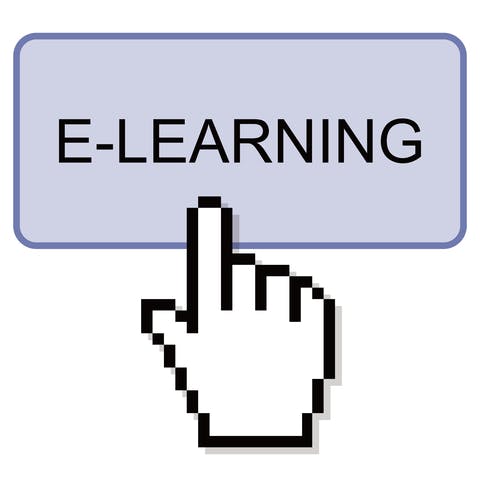Have you ever tried explaining the early Internet to a young colleague?
Mention Usenet and dial-up connections and you might as well be describing the era of main frames and punched cards for all the blank faces you’ll see in response. Yet some relics of that era still manage to linger on, and one of the biggest is traditional eLearning.
First, a history lesson.
Early eLearning wasn’t a huge breakthrough
Let us go back to the late 1990s, when Netscape Navigator was the dominant browser and CD Rom-based training was considered cutting edge. Email was taking off as the first killer app of the Internet age, and marketers discovered you could put “e” in front of anything and make it sound cool.
When CBT Systems changed its name in 1999 to “SmartForce, The eLearning Company,” the aim was both to define a new mode of training and claim it as its own.
In practice, however, eLearning was not the massive breakthrough of some of its other e-brethren. Companies mostly just packaged up content designed for in-person training and put it online in the form of static Web pages or (later) video lectures. If you were very lucky, you might get a PowerPoint presentation you could flip through at your own pace.
Since then, the opportunities offered by digital learning have moved way beyond that – both in pedagogy and in technology – but unfortunately, many companies simply move from live, in-person, instructor-led classes to this old eLearning model and consider themselves done.
Embrace the medium
Traditional eLearning simply doesn’t take advantage of online technology’s massive advances. As an industry, we need to learn from the disruptive innovation happening around us and embrace similar change.
Here are four (4) ways to start:
- Think mobile — More Internet content is now consumed by mobile devices (phones, tablets, watches, etc.) than by desktop computers. What’s more, nearly 20 percent of those under age 35 only use mobile devices to connect. But don’t make the mistake of just moving your desktop-developed content to the mobile format. Start developing content for mobile first.
- Get social — One advantage of the old in-person model was that you attended class with your colleagues. Don’t give that up when you go online – instead, embrace social platforms (yes, like SAP Jam) that inspire employees to collaborate with and learn from each other.
- Break it up — Banish the hour-long lecture. For that matter, banish the 20-minute lecture as well. To take advantage of both mobile and social, you need to split your learning content into bite-sized chunks (video and otherwise) that can be easily consumed — as well as shared and reused in other learning experiences — wherever and whenever an employee wants, in two, five, or 10-minute bites.
- Focus on the user — I almost called this “gamification,” but I know that term causes some people to roll their eyes. It shouldn’t, though. “Gamifying” learning content is really about understanding how users best learn and process information. In many cases, adding even simple game elements like points and badges offer a shot of engagement adrenaline that’s worlds away from the old method of putting a check for understanding in every 15 minutes.
Learn to leapfrog
I’m by no means the first person to speak of the death of eLearning. So why is it taking so long?
Well, one reason is the influence of old-fashioned companies like Skillsoft, which hasn’t really changed its business model since it was founded in 1999. (SmartForce, mentioned above, merged in 2002 with Skillsoft, which then acquired a bunch of other eLearning companies and became the dominant content provider it is today.) Skillsoft’s recent purchase of SumTotal is sort of a Hail Mary pass to finally change that, but that acquisition will only sink both ships faster than they would alone.
Waiting on older companies to embrace change simply slows the rest of us down.
One reason the U.S. was relatively late to the cell phone game compared to other developed economies we had an advanced traditional telephone infrastructure already in place. Other countries without that land line investment are just leap-frogging over it and going straight to mobile.
China now has 1.2 billion mobile phone subscribers, followed by India at 924 million, and together, the people in those two countries alone are expected to buy more than half a billion smartphones this year.
Time to get on the more effective bandwagon
So if you’re a company still mostly invested in instructor-led training and looking to modernize, you don’t need to repeat history and take a stop at each era of learning technology development.
Skip the dinosaur era thinking that every learning need can be solved by a self-paced click-through eLearning and get on the cooler AND more effective bandwagon of mobile, social, chunking and gamification.
Your employees, especially Millennials, won’t just thank you — they might even stick around.
